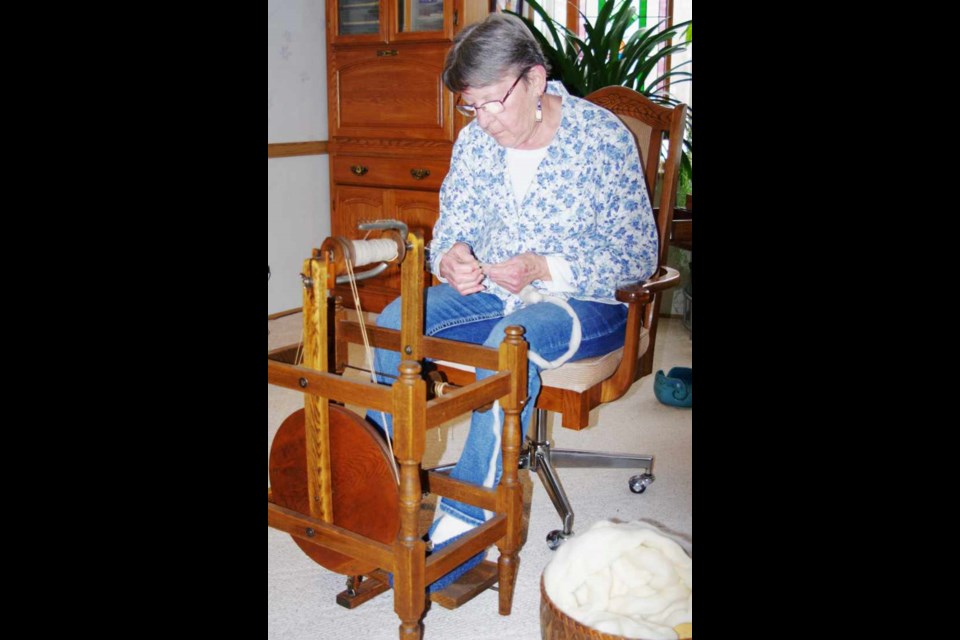A 72-year-old woman from Souris is still behind the wheel, a spinning wheel that is. Carol Inkster enjoys spending her time spinning yarn from llama, alpaca, Angora rabbit, corn, baby camel and mohair. From this yarn Inkster has woven tapestries, rugs, scarves and bags. Sh's also knitted an assortment of shawls, socks, dolls, scarves, hats, mitts and slippers.
“I’ve always been fascinated with these old arts that are being lost,” says Inkster. “I started with making goat soap about forty years ago. People don’t do these things anymore and they are all being forgotten. It just intrigues me to take sheared sheep wool that is greasy, stinky and dirty and wash it, comb it and do all the steps you need to do, to create beautiful things.”
Her oldest spinning wheel, the Sifton spinning wheel, originated in Sifton, Manitoba. “This style of wheel was made between 1930 and 1946 and cost $7.50 new.”
It was here where Willard and Olive McPhedrain manufactured and sold spinning wheel.. This inspired the mail-order company to be titled Sifton Products. When the McPherdrain relocated to Paris, Ont. in 1954, they used the name Mary Maxim as their new store name which derived from an employee of theirs, Mary Maximchuk.
“The Castle wheel, a newer style of wheel, as well as the Sifton wheel is not finicky to run and they are usually called workhorses, as you can use fine or heavy yarn on them,” adds Inkster, who's been spinning for about twenty years now.
“On my sock machine, I do a line of stitching called a Kitchener stitch,” says Inkster. “This style of stitching was derived from Major Kitchener a man in the army. He patented this form of stitching so the men in the army could avoid lumps and bumps on their feet. The machines were sold by the thousands and the wool was supplied by the company that sold the machines. The Red Cross shipped thousands of socks overseas to the men in the army.
“Every woman in the country knit socks to send overseas to soldiers in the war.”
She explains that the older sock machines were made of cast iron. The ones of the 1940s were made of ‘pot metal’.
“It normally takes about an hour and a half, from start to finish for me to make a pair of socks on these hundred-year-old machines. They are so slick to use, it just boggles my mind,” says Carol Inkster.




